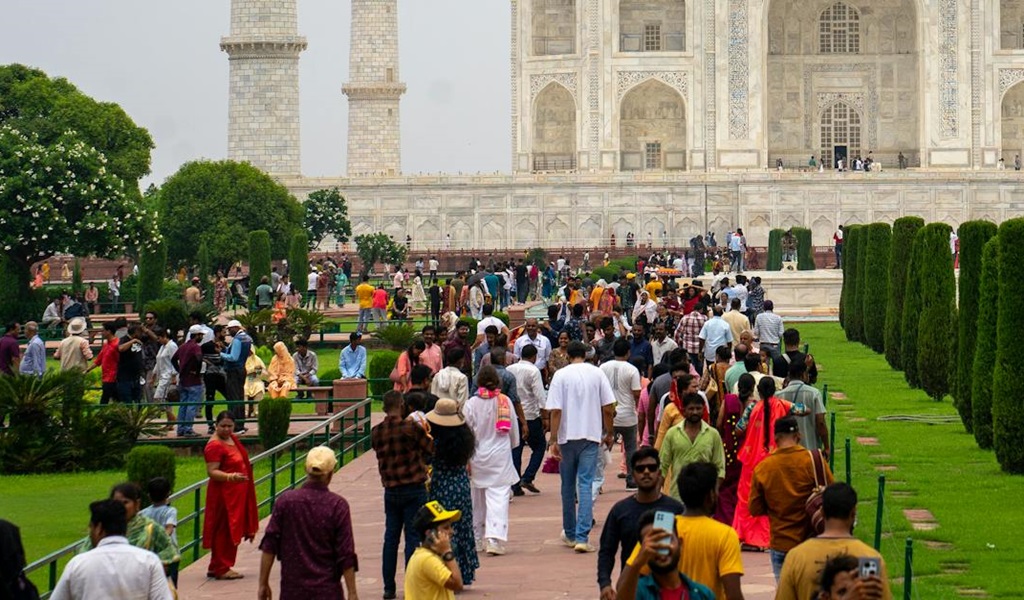India, known for its rich cultural tapestry, boasts a linguistic landscape as diverse as its people. From the snow-capped Himalayas to the sun-kissed shores of the Indian Ocean, the country resonates with the melodic cadence of countless languages and dialects. Language is not just a means of communication in India; it is a cornerstone of identity, culture, and heritage. In this exploration, we delve into the linguistic kaleidoscope of India, unraveling the complexities and richness of its diverse tongues.
Historical Overview
India’s linguistic journey dates back thousands of years, with the roots of its languages intertwined with ancient civilizations such as the Indus Valley Civilization. Sanskrit, one of the oldest languages in the world, served as a foundation for many modern Indian languages. Throughout history, India has been shaped by waves of migration, invasions, and trade, each leaving its imprint on the linguistic landscape. Persian, Arabic, Turkish, and Dravidian languages have all contributed to the linguistic mosaic of India.
Colonial rule in India further influenced linguistic identities. The British introduced English as a medium of instruction and administration, leading to its widespread adoption alongside indigenous languages.
Classification of Languages
India is home to a staggering array of languages, contributing to its rich linguistic tapestry. The question of how many languages in India is a complex one, as linguistic diversity abounds across the country’s vast expanse. Let’s explore the diverse language families and their distribution across different regions of India.
Hindi, Bengali, Telugu, Marathi, Tamil, Urdu, Gujarati, Kannada, Malayalam, and Punjabi are among the major languages spoken in India, each with millions of speakers. These languages are typically associated with specific regions, but their influence transcends borders. India’s linguistic diversity fosters cultural exchange, tolerance, and coexistence. It reflects the country’s pluralistic ethos and serves as a reminder of its rich heritage.
Major Languages and Dialects
Each primary language in India has its own rich literary tradition, cultural heritage, and linguistic nuances. For example, Hindi, the official language of India, has numerous dialects, including Braj, Bhojpuri, and Awadhi. Regional variations and dialects within major languages add layers of complexity and richness to India’s linguistic tapestry. These dialects often reflect the cultural, geographical, and historical influences of specific regions.
Many Indian languages boast unique linguistic features. For instance, Malayalam, a Dravidian language, has a script derived from ancient Brahmi and is renowned for its grammatical intricacies.
Endangered and Minority Languages
India is home to a significant number of endangered languages, many of which are at risk of extinction due to factors such as urbanization, migration, and language shift. Language endangerment in India is influenced by socio-economic factors, linguistic discrimination, and government policies favoring dominant languages.
Various initiatives and organizations are working to document, revitalize, and preserve endangered and minority languages in India. Efforts include linguistic research, community-based language revitalization programs, and digital documentation projects.
Language Policies and Politics
Language has been a contentious issue in Indian politics since independence. The adoption of Hindi as the official language led to protests in non-Hindi-speaking regions, resulting in the adoption of a three-language formula. Language policies in India often intersect with issues of identity, ethnicity, and regionalism. Linguistic diversity is both a source of cultural pride and a potential source of tension.
Language policies in education and governance play a crucial role in shaping access to opportunities and resources. The choice of language of instruction can affect educational outcomes and economic mobility.
Multilingualism and Language Contact
Multilingualism is a common feature of everyday life in India, where individuals often navigate between multiple languages depending on the context. Language contact in India has led to the emergence of hybrid languages, creoles, and pidgins. Borrowing, code-switching, and language mixing are common phenomena in multilingual societies.
Code-switching, the alternating use of two or more languages within a conversation, is prevalent in India. It serves various functions, including social identity, group solidarity, and pragmatic communication.
Digital Age and Language Technology
Digital technology has transformed language use and communication in India, providing new opportunities for language preservation, documentation, and revitalization. Language technologies such as machine translation, speech recognition, and text-to-speech synthesis are being developed for Indian languages, expanding access to information and services.
While digital technology offers new possibilities for linguistic research and innovation, challenges such asthe digital divide, language standardization, and script encoding need to be addressed.
Future Outlook and Challenges
Despite the challenges, there is optimism about the preservation and promotion of linguistic diversity in India. Grassroots movements, government initiatives, and technological advancements offer hope for the future. Globalization poses challenges to linguistic diversity, with dominant languages exerting influence over minority languages. Efforts to preserve indigenous languages must contend with pressures for linguistic homogenization.
To foster linguistic inclusivity, policymakers, educators, and community leaders must prioritize language rights, promote multilingual education, and support grassroots language revitalization efforts.
Conclusion
India’s linguistic kaleidoscope is a testament to the country’s rich cultural heritage, diversity, and resilience. From the ancient scripts of Sanskrit to the vibrant vernaculars of today, India’s languages reflect the dynamic interplay of history, culture, and identity. As India marches forward into the digital age, preserving and celebrating its linguistic diversity will be paramount, ensuring that the voices of all language communities continue to resonate in the tapestry of Indian culture.

















